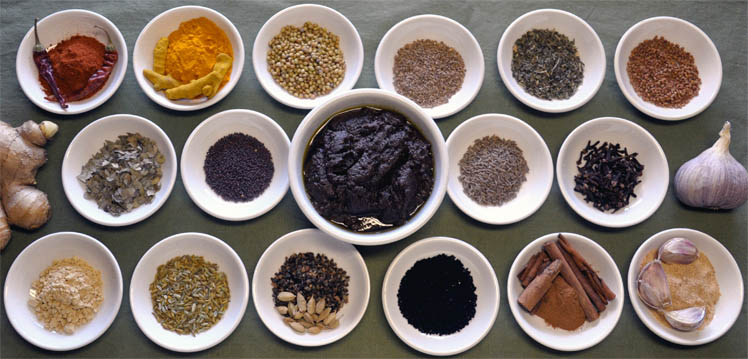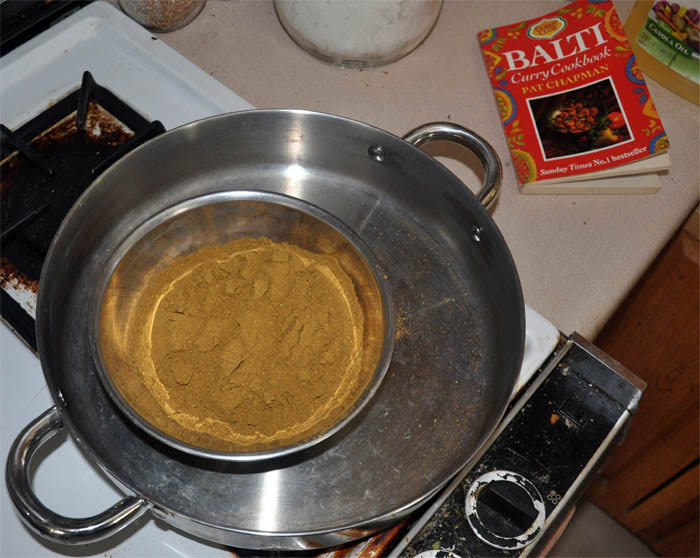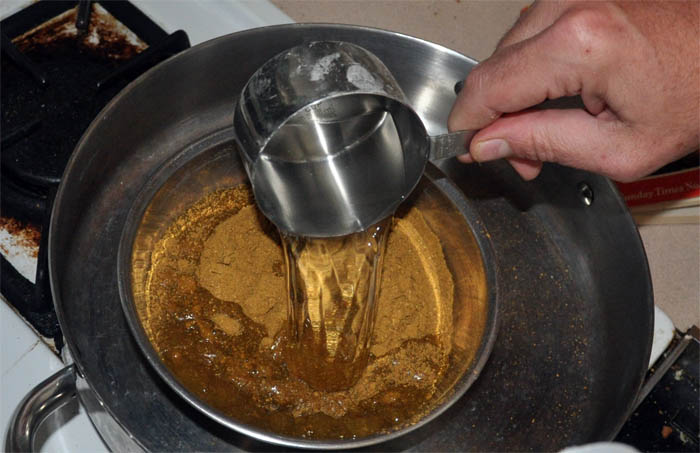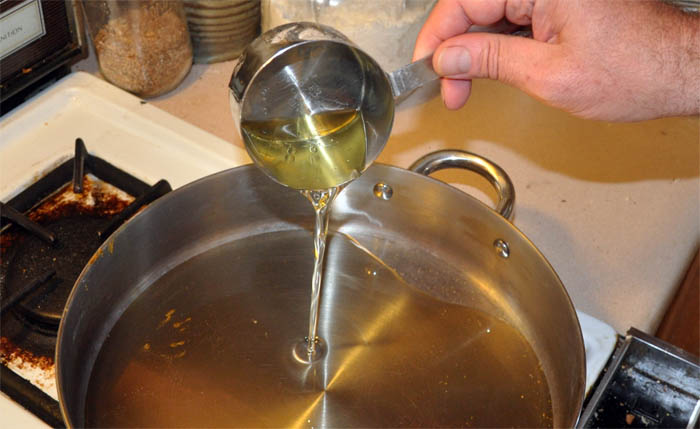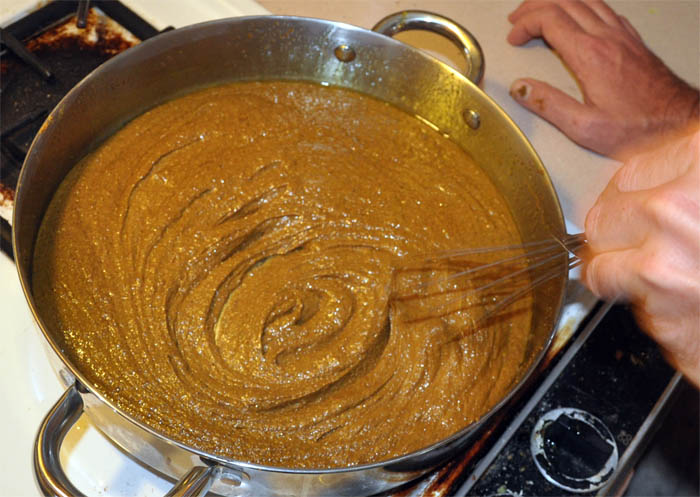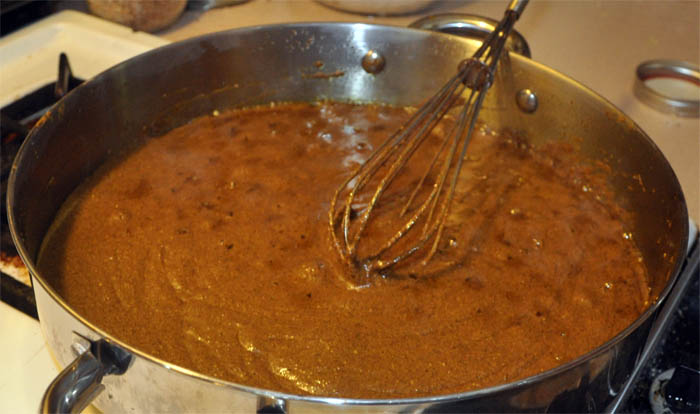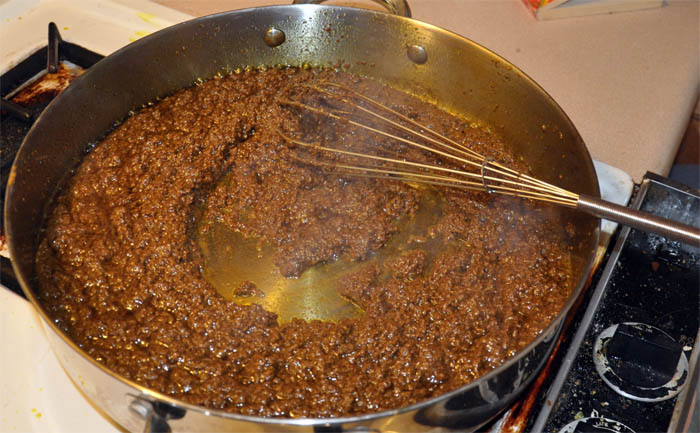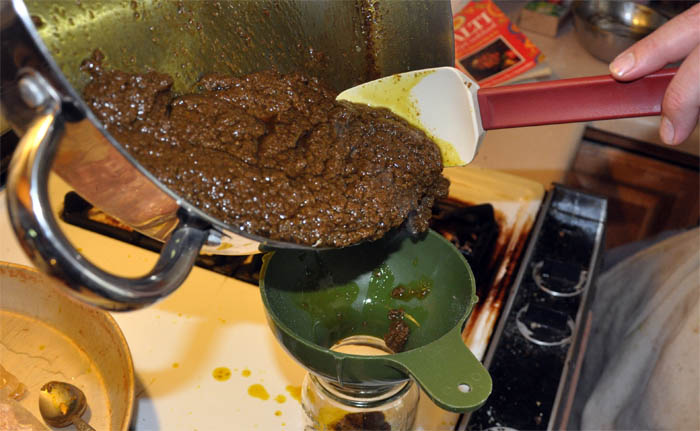
Balti Masala Paste
Masala means ‘seasoning’ in Hindi, and is the basis for the ubiquitous ‘curry powder' found in most western kitchens. However, there is not just one masala used in Balti (or Indian) cooking, but many that are tailored to the foods they accompany. As a result, we also need to make three different masalas before we start cooking our Balti meal. The first we’ll make is Balti Masala, which like Balti Garam Masala is more savory and aromatic than masala mixes from farther south. Like before, we’ll dry roast and grind the whole spices, but then we’ll follow up by cooking this mixture in vinegar and oil to make a ready-to-use paste that will keep for months in the refrigerator. With this on hand you’ll be able to make an authentic Balti curry at a moment’s notice. Why grind your own spices from whole seeds? Many of the flavor components in spices are volatile, and will evaporate away over time. To get the fullest and freshest flavor, with all the tastes held in the spices, it is always best to grind them just before use. You’ll be amazed at the difference, and won’t be able to go back to pre-ground spices. The only reason to not is when the spices are too hard or large to effectively grind using a coffee mill; in this case go ahead and buy the pre-ground. Because we’re going to make a spice paste, the volatile flavors will get caught in the oil and vinegar. Thus the paste will keep its flavor indefinitely. The following recipe will make about a pound and a half of paste: 4 tablespoons whole Coriander seed Roast and cool whole spices as directed in the Balti Garam Masala recipe. Grind and mix with remaining pre-ground spices. Place all of mixed spice powder into a bowl. Whisk in 1 cup of white vinegar; leave paste to stand for at least 10 minutes.
Heat oil in a large pan until it just begins to smoke. Add the paste to the hot oil. Be careful! It will sputter quite a bit. Mix into the hot oil by continually whisking.
In about 5 minutes the paste will become reduced to the point that it will begin making a bubbling noise (Pat Chapman correctly describes this as ‘chup-chup-chup-chup’. As soon as you see some oil gathering on the top of the paste, take the pan off the heat.
Place hot paste into a clean 1-pint glass canning jar (Picture 7). Cover with a cap of oil and seal jar. Once cool, place in the refrigerator.
While many of these are typical grocery store spices, other are more exotic and may take some searching if you don’t live in a city with a diverse ethnic population. All may be bought at an Indian market although they may be called different things. For instance, Ajiwian is sometimes called ‘Bishops Weed’ while Kaljoni is sometimes call ‘Charnushka’ or 'Black Cumin'. If you can’t find these spices locally, consider buying them on-line from a reputable vendor. |
